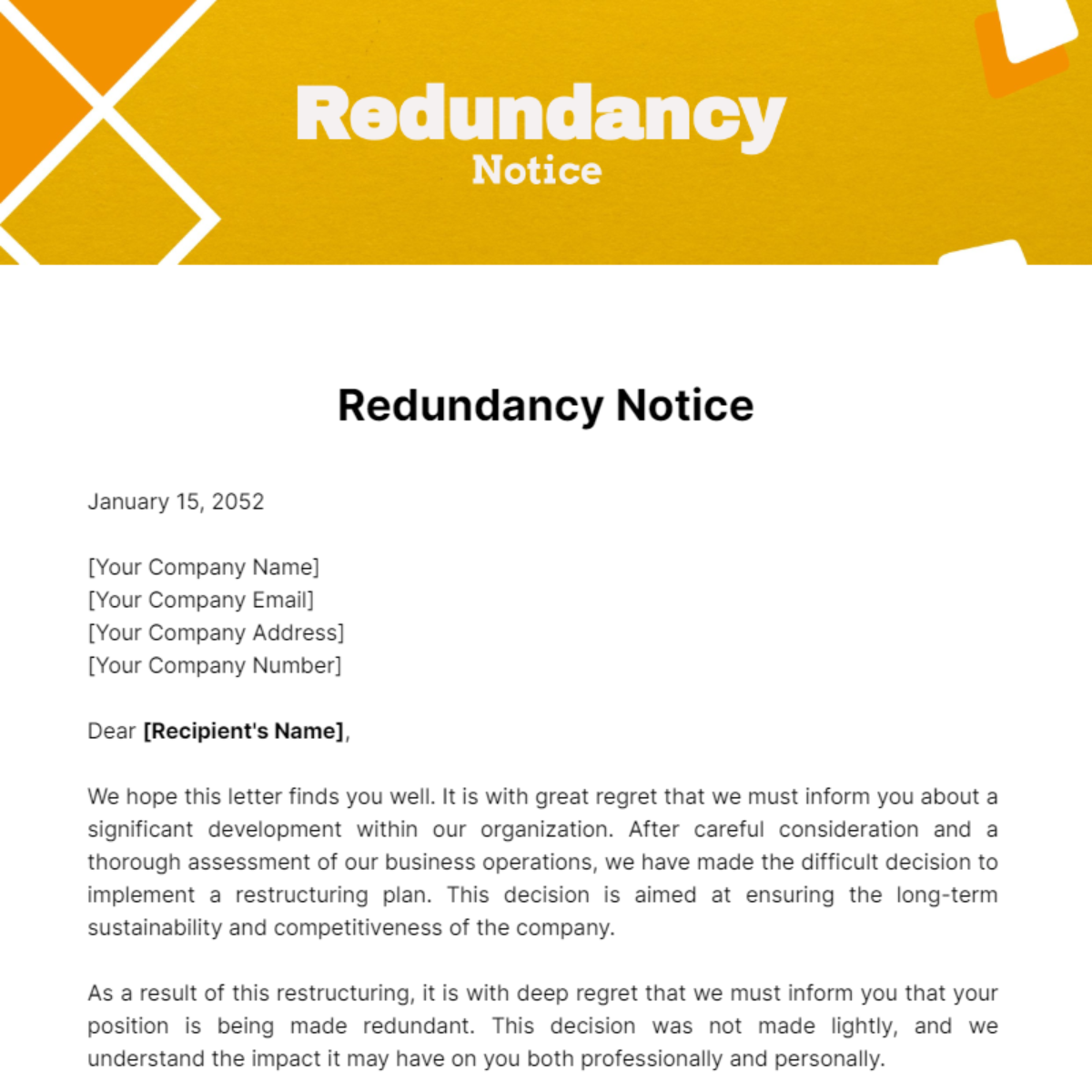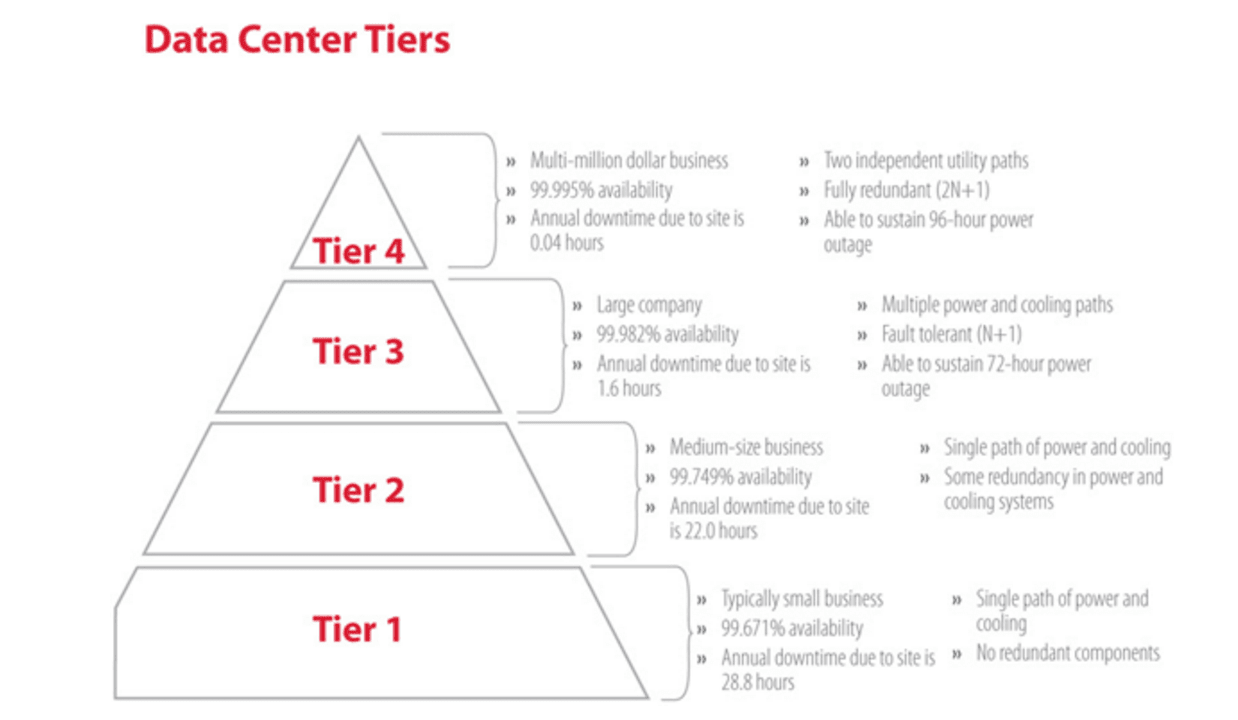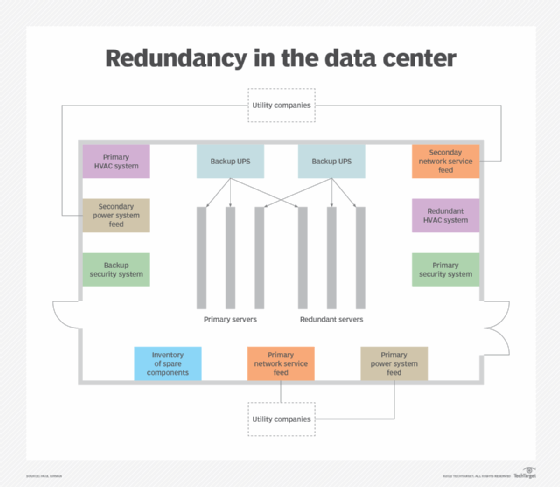What Happens to Redundancy If Company Goes Bust? An Overview to Your Rights
What Happens to Redundancy If Company Goes Bust? An Overview to Your Rights
Blog Article
Investigating the Interaction Between Firm Redundancy and Organizational Adaptability for Future Development
In the dynamic landscape of today's service globe, the intricate connection in between company redundancy and organizational versatility arises as an essential aspect for continual development and success. Firms usually face the difficulty of striking a delicate balance in between preserving a degree of redundancy to minimize threats and fostering flexibility to react promptly to the ever-evolving market needs.
Importance of Company Redundancy
Company redundancy is an essential aspect that boosts business strength and minimizes functional threats. By including redundancy actions within the business structure, business can better withstand unexpected interruptions and fluctuations in the company environment. Redundancy works as a strategic buffer, permitting business to adapt and respond effectively to unexpected obstacles without endangering necessary procedures.
One secret element of the significance of company redundancy is its role in making certain connection during times of crisis. When confronted with abrupt adjustments or emergency situations, redundant systems, resources, or employees can action in to maintain essential features and stop prevalent disruptions. This continuity not only safeguards the firm's reputation and client trust but additionally lessens monetary losses and functional downtime.

Techniques for Organizational Versatility

One more critical strategy is buying innovation and facilities that can sustain adaptability and scalability. Applying electronic devices, automation, and information analytics can simplify operations, improve efficiency, and offer useful understandings for notified decision-making. In addition, developing adaptable business structures that enable for quick modifications to market dynamics and client needs is vital for staying competitive in a rapidly advancing atmosphere. By proactively recognizing potential disruptions and chances, companies can proactively adjust and prosper in an ever-changing organization landscape.
Harmonizing Redundancy and Versatility
Achieving an unified balance between functional redundancy and organizational flexibility is vital in navigating the intricacies of a dynamic company environment. Redundancy within a business offers a safety and security internet, guaranteeing connection and stability in procedures. Nevertheless, an excess of redundancy can bring about inefficiencies and prevent versatility to transforming market conditions. On the various other hand, organizational flexibility enables companies to respond without delay to external disruptions and confiscate new possibilities. Striking the right equilibrium between redundancy and versatility is a fragile process that calls for a deep understanding of the organization's goals, read more market dynamics, and threat tolerance.
To attain this equilibrium, companies need to conduct regular evaluations of their operations to determine areas where redundancy is required for danger mitigation and where versatility can drive development and development. Implementing adaptable frameworks, cultivating a society of constant discovering and enhancement, and motivating open communication across all levels of Read More Here the company are key techniques to harmonize redundancy and adaptability effectively. By straightening these 2 important aspects, business can position themselves for lasting development and success in an ever-changing service landscape.
Situation Research Studies on Adaptation Success
In taking a look at instances of effective business adaptation, it becomes noticeable that the interaction between functional redundancy and versatility is a specifying consider shaping resilient organizations. One compelling study is that of Netflix. At first a DVD rental service, Netflix showed amazing adaptability by transitioning right into a streaming platform when digitalization interrupted the industry. By tactically investing in modern technology and material creation, Netflix not just thrived yet survived in a swiftly developing market. Another standout example is Amazon. Beginning as an on the internet book shop, Amazon constantly adjusted its business design, expanding into varied industries such as cloud computer and expert system. This adaptability enabled Amazon to remain ahead of competitors and fulfill changing customer needs. Lastly, Adobe supplies a noteworthy picture of effective adjustment. The company moved from marketing software licenses to a subscription-based design, ensuring repeating profits streams and boosted customer interaction. These instance studies underscore the relevance of functional redundancy paired with organizational versatility in promoting lasting development and competitiveness.
Building Durability for Future Growth
Building resilience for future development needs a critical positioning of operational procedures with market characteristics and arising patterns. Companies have to adjust to altering environments by fostering a society of flexibility, innovation, and continual enhancement.
Moreover, cultivating strong Find Out More relationships with stakeholders, such as consumers, workers, vendors, and the neighborhood, is vital for maintaining and weathering unpredictabilities depend on and support during turbulent times. Effective interaction and openness play an important role in structure resilience, as they assist straighten expectations and facilitate collaboration in browsing uncertainties.
Additionally, companies need to focus on discovering and development campaigns to upskill workers and furnish them with the required tools to adapt to transforming circumstances. By investing in their workforce, business can boost their adaptability and dexterity, inevitably strengthening their resilience for lasting future development.
Final Thought

In the vibrant landscape of today's business globe, the detailed connection in between company redundancy and organizational flexibility emerges as a vital factor for sustained development and success. Firms typically encounter the challenge of striking a delicate equilibrium in between preserving a degree of redundancy to mitigate dangers and cultivating flexibility to respond quickly to the ever-evolving market needs.To attain this equilibrium, companies need to perform normal assessments of their operations to determine locations where redundancy is essential for risk mitigation and where versatility can drive advancement and development.In verdict, the interplay between company redundancy and organizational versatility is vital for future development. Structure resilience through a mix of redundancy and flexibility will certainly ensure that companies are prepared for the challenges of the future.
Report this page